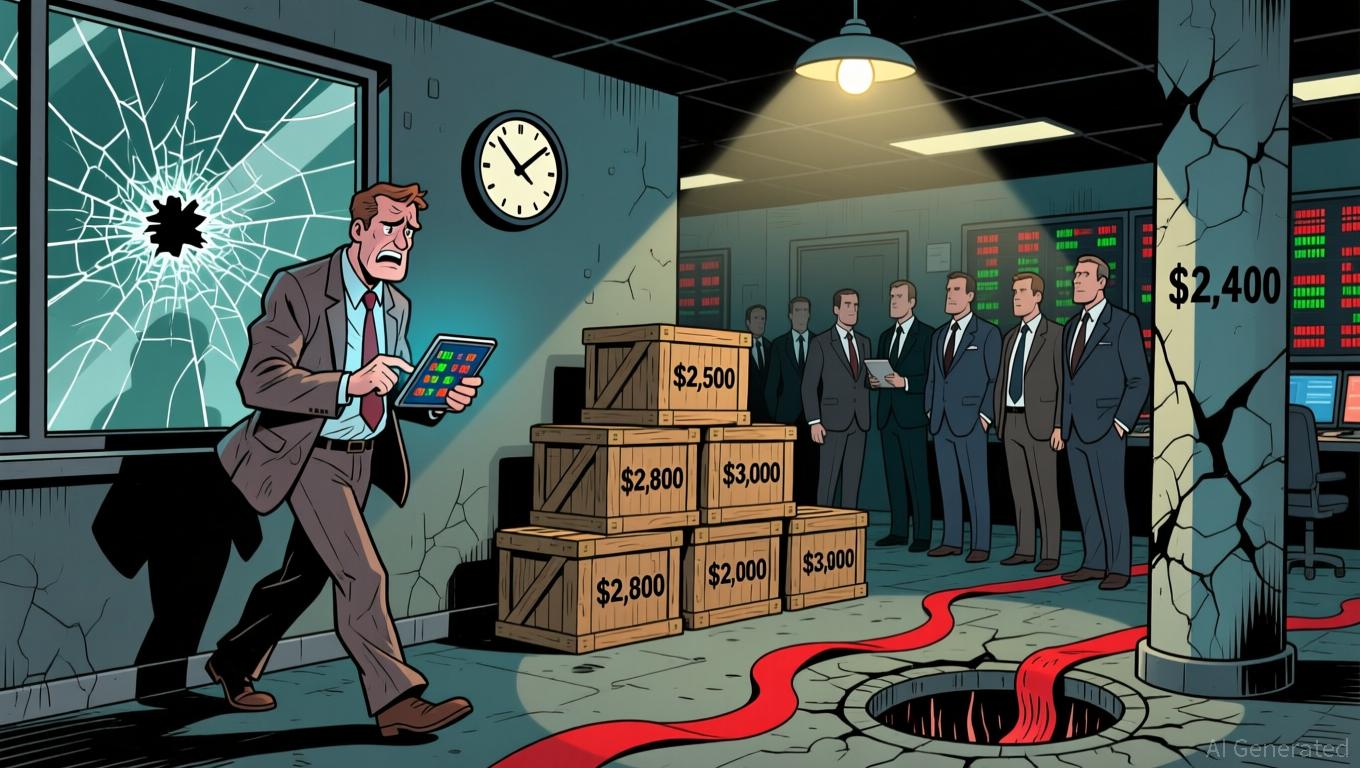Bolivia Turns to Stablecoins for Economic Stability and to Attract Investment
- Bolivia accelerates stablecoin integration into its financial system to stabilize the economy and attract investment, allowing banks to offer crypto-based services as legal tender. - The policy follows 2024's crypto ban removal, addressing currency depreciation and aligning with President Paz's market-oriented agenda to reverse economic stagnation through $9B in multilateral loans. - Gold mining formalization and a public-private gold bank aim to ensure environmental compliance, while fiscal reforms incl
Bolivia's administration is moving quickly to incorporate stablecoins into the official financial sector, as part of a comprehensive plan to boost economic stability and draw in investors. Economy Minister José Gabriel Espinoza revealed that this initiative will permit banks to provide crypto-related products like savings accounts, credit cards, and loans, making stablecoins a recognized payment method.
This program is a key element of President Rodrigo Paz's pro-market reforms, designed to counteract the economic slowdown brought on by years of heavy state intervention and nationalization by the former government. At present, Bolivia is

This move mirrors a wider trend across Latin America, where countries are dealing with both economic uncertainty and the expansion of decentralized finance. While some, like Spain, are introducing strict crypto taxation, Bolivia is opting for a more open stance. Espinoza's team is also working to formalize the gold mining industry and overhaul fuel subsidies by shifting distribution to private companies, with state-run YPFB continuing operations in isolated regions.
Bolivia anticipates re-entering global credit markets by late 2026 or early 2027, with $5 billion in multilateral loans designated for private sector initiatives. The government has emphasized its autonomy from IMF influence, maintaining authority over debt decisions while staying receptive to discussions. Espinoza stressed that default is not being considered, especially with a $333 million eurobond payment due in March 2026.
The adoption of stablecoins will likely attract attention from international regulators and investors, but it highlights Bolivia's commitment to updating its financial system in a challenging economic climate. As the country manages this shift, the effectiveness of its crypto-forward policies will depend on striking a balance between fostering innovation and maintaining regulatory controls, ensuring digital assets contribute to stability rather than increased risk.
Disclaimer: The content of this article solely reflects the author's opinion and does not represent the platform in any capacity. This article is not intended to serve as a reference for making investment decisions.
You may also like
XRP News Today: Abu Dhabi’s Green Light Establishes UAE as a Pioneer in Stablecoin Development
- Ripple's RLUSD stablecoin gains Abu Dhabi regulatory approval as UAE advances digital finance leadership. - ADGM's "Accepted Fiat-Referenced Token" designation enables institutional use for lending and cross-border payments. - RLUSD's $1.2B market cap growth reflects institutional demand, backed by USD reserves and dual blockchain operations. - UAE's ADGM-DIFC regulatory synergy attracts global fintechs , with Ripple expanding partnerships across Africa and Asia. - Regulatory milestones position RLUSD to
Ethereum Updates: Ethereum Drops to $2,800, Prompting Surge in Demand for ZKP's Hardware-Based Presale
- Ethereum's price fell below $2,800, triggering $6.5M liquidations and testing critical support levels amid declining on-chain demand metrics. - Institutional players like BitMine accumulated 3.62M ETH (~$10.4B) despite the selloff, signaling long-term bullish conviction. - ZKP's hardware-driven presale gained traction with $17M in ready-to-ship Proof Pods and Miami Dolphins partnership for privacy-focused sports analytics. - Mutuum Finance's $19M DeFi presale and ZKP's auction model with $50K wallet caps

Vitalik Buterin Supports ZKsync: What This Means for Layer 2 Scaling
- Vitalik Buterin endorsed ZKsync in late 2025, highlighting its "underrated and valuable" work alongside the Atlas upgrade achieving 15,000 TPS and $0.0001 fees. - ZKsync's zero-knowledge rollups and EVM compatibility enabled institutional adoption by Deutsche Bank , Sony , and Goldman Sachs for cross-chain and enterprise use cases. - The Fusaka upgrade aims to double throughput to 30,000 TPS by December 2025, positioning ZKsync to compete with Polygon zkEVM and StarkNet in Ethereum's Layer 2 landscape. -

The ZK Atlas Enhancement: Revolutionizing Blockchain Scalability?
- ZKsync's 2025 Atlas Upgrade achieves 15,000–43,000 TPS with sub-1-second finality, addressing Ethereum L2 scalability bottlenecks via Airbender proofs and modular OS. - DeFi protocols like Aave and Lido leverage ZKsync's $0.0001/tx costs to unify liquidity, while Deutsche Bank and Sony adopt its trustless cross-chain infrastructure for compliance and transparency. - ZK token surged 150% post-upgrade, with TVL hitting $3.3B and analysts projecting 60.7% CAGR for ZK Layer-2 solutions by 2031 amid instituti
